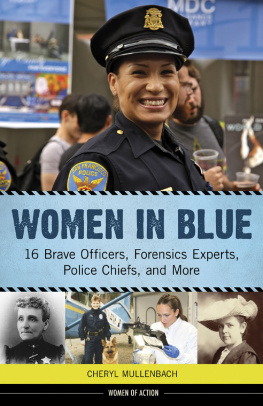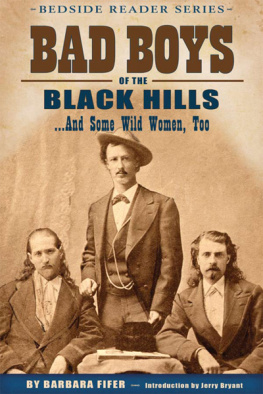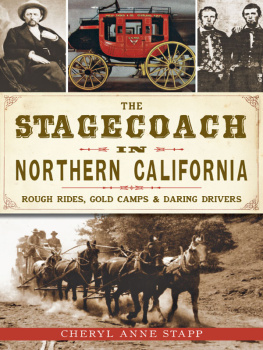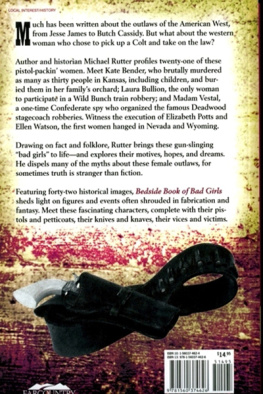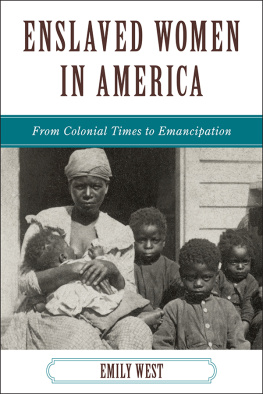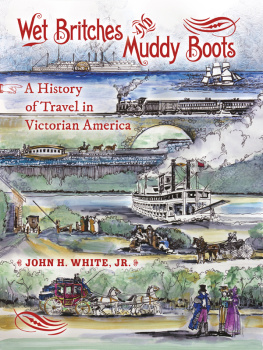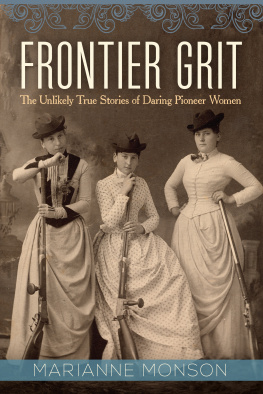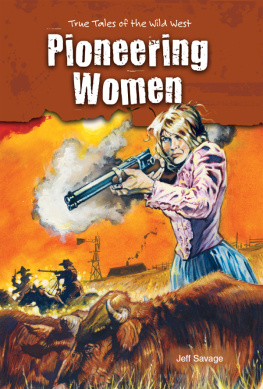Cheryl Mullenbach is a former history teacher, newspaper editor, and public television project manager. She is the author of five nonfiction books for young people. The American Library Association named Double Victory to its Amelia Bloomer Top Ten List in 2014. The FDR Presidential Library and Museum honored her as one of ten authors at their Roosevelt Reading Festival in 2013. All of her books (Great Depression for Kids, Industrial Revolution for Kids, Women in Blue, and Torpedoed!) have been included in the National Council for Social Studies Notable Trade Books for Young People. The International Literacy Association recognized Industrial Revolution for Kids in 2015.
Bake Birchell, Donna. Wicked Women of New Mexico. Charleston, SC: History Press, 2014.
Bentz, Alyssa. (2017). How Horses Have Been the Pride of Wells Fargo Service. https://stories.wf.com/horses-pride-wells-fargo-service. Retrieved April 28, 2019. Bentz, Donald. William and Anna Neal of Oracle and the Mountain View Hotel. Oracle Historian 5 (Summer 1982): 118.
Block, Eugene. Great Stagecoach Robbers of the West. Garden City, NY: Doubleday, 1962.
Bryant, Jerry L., and Barbara Fifer. Deadwood Saints and Sinners. Helena, MT: Farcountry Press, 2017.
Coleman Jr., J. Winston. Stage-Coach Days in the Bluegrass. Louisville: University Press of Kentucky, 1935.
DeArment, Robert K. Assault on the Deadwood Stage: Road Agents and Shotgun Messengers. Norman: University of Oklahoma Press, 2012.
Ferrell, Merri, and Christopher Augerson. Concord Ornamental Painter John Burgum and the Artistry of Carriage Painting. Abbot-Downing: Coach and Wagon Makers to the World. Historical New Hampshire (2011): 3051.
Garceau-Hagen, Dee, ed. Portraits of Women in the American West. New York: Routledge, 2005.
Gerard, Anna. 1878. Diary of Anna Gerard. Deadwood History, Inc. Adams Museum Collection, Deadwood, SD.
Haywood, C. Robert. Trails South: The Wagon-Road Economy in the Dodge City-PanhandleRegion. Norman: University of Oklahoma Press, 1986.
Holmes, Oliver W., and Peter T. Rohrbach. Stagecoach East: Stagecoach Days in the East from the Colonial Period to the Civil War. Washington, DC: Smithsonian Institution Press, 1983.
Horan, James D. Desperate Women. New York: Crown, 1952.
Jackson, Joseph Henry. Bad Company: The Story of Californias Legendary and Actual Stage-Robbers. 1st edition, New York: Harcourt Brace, 1949.
Lee, W. Storrs. The Sierra. New York: G. P. Putnams Sons, 1962.
Marriott, Barbara. Annies Guests. Tucson, AZ: Catymatt Productions, 2002. Martineau, Harriet. Retrospect of Western Travel in Three Volumes. London: Saunders and Otley, 1838.
Martineau Wagner, Tricia. African American Women of the Old West. Helena, MT: TwoDot, 2007.
Moody, Ralph. Stagecoach West. Lincoln: University of Nebraska Press, 1967.
Morse Earle, Alice. Stage Coach and Tavern Days. New York: Macmillan, 1901.
Nichols Churchill, Caroline. Active Footsteps. Colorado Springs, CO: Mrs. C. N. Churchill, 1909.
. Little Sheaves; Gathered while Gleaning after Reapers. San Francisco: Mrs. C. M. Churchill, 1874.
. Over the Purple Hills. Denver: Mrs. C. M. Churchill, 1881.
Palmquist, Peter E. Stereo Artist, Mrs. E. W. Withington; or, How I Use My Skirt for a Darktent. Stereo World 10 (November/December 1983): 2021.
Piper, Mrs. W. R. 1955. Mrs. W. R. Piper Reminiscences. Mss 1509, Oregon Historical Society Research Library.
Pratt, Leroy. Ten Cents a Mile and a Fence Rail. Annals of Iowa 39 (1969): 597603.
Reich, Alice, and Thomas J. Steele, S. J. Fraser Haps and Mishaps: The Diary of Mary E.Cozens. Denver: Regis College Press, 1990.
Riley, Glenda, and Richard W. Etulain, eds. Wild Women of the Old West. Golden, CO: Fulcrum Publishing, 2003.
Root, Frank A., and William Elsey Connelley. The Overland Stage to California. Topeka, KS: Crane & Co., 1901.
Royall, Anne. The Black Book; or, A Continuation of Travels in the United States. Washington, DC: Mrs. Anne Royall, 1828.
Schwantes, Carlos A. The Steamboat and Stagecoach Era in Montana and the Northern West. Montana: Magazine of Western History 49 (Winter 1999): 215.
Shirley, Gayle C. More Than Petticoats: Remarkable Montana Women. Guilford, CT: Globe Pequot Press, 2011.
Spring, Agnes Wright. The Cheyenne and Black Hills Stage and Express Routes. Glendale, CA: A. H. Clark, 1949.
Stapp, Cheryl Anne. The Stagecoach in Northern California. Charleston, SC: History Press, 2014.
Strahorn, Carrie Adell. Fifteen Thousand Miles by Stage, Volume 1: 18771880. New York: Knickerbocker Press, 1911.
. Fifteen Thousand Miles by Stage, Volume 2: 18801898. New York: Knickerbocker Press, 1911.
Turner, Erin H., ed. Wild West Women: Fifty Lives That Shaped the Frontier. Helena, MT: TwoDot, 2016.
Weise, Arthur James. The City of Troy and Its Vicinity. Troy, NY: Edward Green, 1886.
Wilson, R. Michael. Great Stagecoach Robberies of the Old West. Helena, MT: TwoDot, 2007.
Winther, Oscar O. Via Western Express and Stagecoach. Stanford, CA: Stanford University Press, 1945.
Withington, Mrs. E. W. How a Woman Makes Landscape Photographs. Philadelphia Photographer 13 (December 1876): 35779. Women in Photography Archive. https://www.cla.purdue.edu/waaw/palmquist/Photographers/WithingtonEssay.html.
C HAPTER 1
The Stagecoach: Job Creator, Money Maker
A HUGE UNCOUTH, UNMANNERLY, ROUGH LOOKING BEING, SCARCELY human; his visage would frighten a wolf. Stagecoach passenger Anne Newport Royall didnt hold back in her straight-talking description of a worker she encountered at a stage stop in Worcester, Massachusetts, in 1828. She added, It is surprising that the owners of those lines cannot see their interest to employ none but obliging men to superintend their business, particularly men who are qualified to treat travelers well for their money.
By 1828, when Anne expressed her displeasure with stage travel, including her interaction with a greasy, black coach, the cushions of which were nails, a beastly drunk fellow passenger, and a drunk chambermaid at the tavern, stagecoaching had been operating as a form of public transportation for roughly a hundred years. Despite Anne Royalls unsatisfactory experience, the stagecoach industry as a whole succeeded in many facets of business. Stagecoaching provided jobs, inspired entrepreneurship, facilitated mass movement of people, transmitted news, promoted commerce and tourism, and supported the needs of hopeful but lonely prospectors. It generated widespread economic impact, and it would continue to do so for generations. In time its usefulness was diminished and ultimately eliminated, but for two hundred years stagecoaching was a sustained and profitable contributor to the economy.
It was in the early 1700s that European colonists in North America first began utilizing stagecoaches as a vehicle for hire to carry passengers, mail, newspapers, and small freight. This much-needed endeavor provided a service as well as job opportunities. But the lack of decent roads was a huge barrier.
There is a large variety in American roads excellent limestone roads which stretch out in three directions from Nashville, Tennessee there is quite another sort of limestone road in Virginia, sloping so as to throw the passengers on one another there are the rich mud roads of Ohio and the admirable road running parallel with Lake Ontario. British tourist and writer Harriet Martineau described her experiences traveling by stage on American roads in 1838. Her encounter with the corduroy roads of America were happily of rare occurrence as passengers were tossed about like pills in a pill box.




